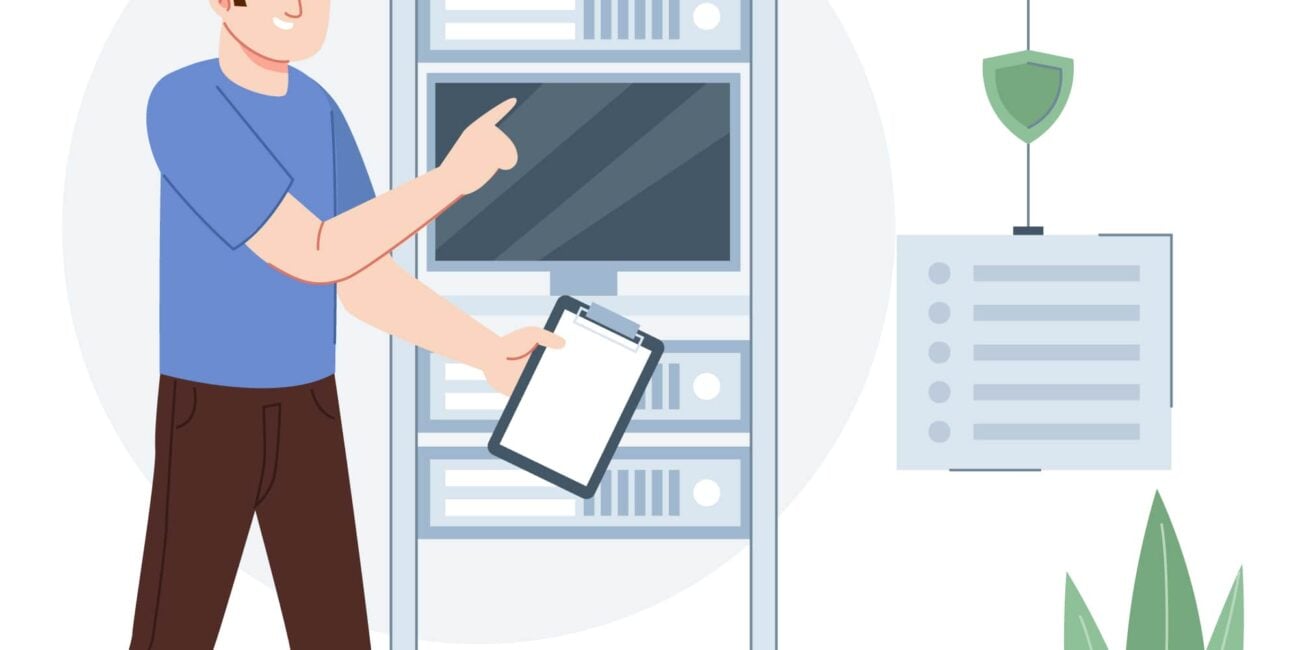In today’s digital age, having a reliable web hosting service is crucial for any online presence, whether it’s a personal blog, a small business website, or a large e-commerce platform. However, even the best web hosting services can encounter problems. Understanding these common web hosting issues and knowing how to solve them can save you time, money, and a lot of frustration.
Introduction
Web hosting is the backbone of your online presence. It’s the service that makes your website accessible on the internet. However, it’s not uncommon to face web hosting issues that can disrupt your website’s performance and user experience. This blog post will delve into the most common web hosting problems and provide practical solutions to fix them.
Slow Website Speed
Causes of Slow Website Speed
One of the most prevalent hosting issues is slow website speed. This can be caused by several factors:
- Server Overload: If your server is hosting too many websites, it can become overloaded.
- Large Media Files: High-resolution images and videos can significantly slow down your site.
- Unoptimized Code: Poorly written code or too many plugins can affect performance.
- Outdated Software: Running outdated software can lead to inefficiencies and security risks.
Fixing Slow Website Speed
To solve slow website speed issues:
- Upgrade Your Hosting Plan: If your current plan can’t handle your traffic, consider upgrading to a higher-tier plan.
- Optimize Images and Media: Compress and resize images, use lazy loading for videos.
- Minify CSS and JavaScript: Use tools like Minify and UglifyJS to reduce file sizes.
- Enable Caching: Use caching plugins to reduce load times.
- Use a Content Delivery Network (CDN): CDNs distribute your content across multiple servers worldwide, reducing load times for users far from your server location.
Downtime and Unavailability
Causes of Downtime
Downtime is when your website becomes inaccessible. This can be due to:
- Server Maintenance: Regular maintenance can cause temporary downtime.
- Hardware Failures: Physical server components can fail.
- DDoS Attacks: Distributed Denial of Service attacks can overwhelm your server with traffic.
- Exceeding Resource Limits: Going over your allocated bandwidth or storage can lead to downtime.
Fixing Downtime Issues
To mitigate and fix downtime:
- Choose a Reliable Host: Select a hosting provider with a strong uptime record.
- Monitor Your Site: Use tools like Pingdom or UptimeRobot to monitor your website’s availability.
- Implement Security Measures: Protect against DDoS attacks with security services like Cloudflare.
- Regular Backups: Ensure regular backups to recover quickly in case of hardware failures.
- Upgrade Resources: Ensure your hosting plan meets your website’s needs to prevent resource overuse.
Security Vulnerabilities
Common Security Issues
Security vulnerabilities are critical web hosting problems. They can arise from:
- Outdated Software: Old software can have known security flaws.
- Weak Passwords: Simple passwords are easy to hack.
- Lack of SSL Certificates: Without SSL, data transfer isn’t encrypted.
- Malware and Viruses: These can compromise your website and user data.
Fixing Security Vulnerabilities
To enhance security:
- Keep Software Updated: Regularly update your CMS, plugins, and server software.
- Use Strong Passwords: Employ complex passwords and change them regularly.
- Install SSL Certificates: Ensure all data transferred is encrypted.
- Use Security Plugins: Plugins like Wordfence or Sucuri can provide additional protection.
- Regular Scans: Perform regular malware and virus scans.
Insufficient Bandwidth and Storage
Causes of Insufficient Resources
Insufficient bandwidth and storage can be problematic, especially for growing websites. Causes include:
- Increased Traffic: Sudden traffic spikes can exhaust your bandwidth.
- Large Files: Hosting large files or media can quickly consume storage.
- Inefficient Resource Management: Poorly managed resources can lead to wastage.
Fixing Insufficient Resources
To address these issues:
- Monitor Usage: Use tools provided by your host to monitor bandwidth and storage.
- Optimize Resources: Compress files and optimize databases.
- Upgrade Plan: Choose a plan that scales with your growth.
- Implement Limits: Set limits on file sizes and types allowed for upload.
Email Issues
Common Email Problems
Web hosting services often include email hosting, which can face issues such as:
- Email Downtime: Email servers can go down, causing disruption.
- Spam Filters: Overzealous filters can block legitimate emails.
- SMTP Issues: Misconfigurations can prevent emails from sending.
- Blacklisting: Your IP can get blacklisted, marking your emails as spam.
Fixing Email Issues
To solve email problems:
- Regular Maintenance: Ensure email servers are regularly maintained.
- Adjust Filters: Fine-tune spam filters to reduce false positives.
- Check SMTP Settings: Verify SMTP settings are correctly configured.
- Monitor Blacklists: Use tools to monitor and delist your IP if necessary.
Database Connection Errors
Causes of Database Errors
Database connection errors can make your website inaccessible. Common causes include:
- Incorrect Credentials: Wrong database credentials in your configuration files.
- Corrupt Database: Database corruption can lead to connection issues.
- Server Issues: Problems with the database server itself.
- Exceeding Limits: Hitting your database quota can cause errors.
Fixing Database Errors
To resolve database connection issues:
- Check Credentials: Verify your database credentials in the configuration files.
- Repair Database: Use tools like phpMyAdmin to repair corrupt databases.
- Optimize Database: Regularly optimize and clean up your database.
- Upgrade Plan: Ensure your hosting plan can handle your database needs.
Poor Technical Support
Impact of Poor Support
Technical support is crucial for resolving web hosting problems. Poor support can lead to:
- Delayed Resolutions: Slow responses can prolong downtime.
- Inadequate Solutions: Unskilled support can provide incorrect fixes.
- Communication Barriers: Language or technical barriers can hinder effective communication.
Improving Technical Support
To ensure good support:
- Choose Reputable Hosts: Opt for hosting providers known for excellent support.
- Test Support: Contact support before committing to a host to gauge response times and effectiveness.
- Use Documentation: Leverage your host’s knowledge base and community forums.
- Consider Managed Hosting: Managed hosting services often offer superior support.
DNS Problems
Causes of DNS Issues
DNS (Domain Name System) issues can make your website unreachable. Common causes include:
- Incorrect Settings: Misconfigured DNS settings can prevent access.
- DNS Server Failures: DNS servers can go down, causing accessibility issues.
Fixing DNS Problems
To resolve DNS issues:
- Check Settings: Ensure DNS settings are correctly configured.
- Monitor Propagation: Use tools to monitor DNS propagation after changes.
- Use Reliable DNS Providers: Opt for reputable DNS providers with high uptime.
- Set Up Secondary DNS: Use secondary DNS to provide redundancy.
Server Configuration Errors
Common Configuration Issues
Incorrect server configurations can lead to a variety of problems, such as:
- Incorrect Permissions: File and folder permission errors can cause accessibility issues.
- Misconfigured Software: Incorrect settings in server software like Apache or Nginx.
- Resource Limits: Misconfigured limits can restrict performance.
Fixing Configuration Errors
To correct server configuration errors:
- Review Permissions: Ensure correct file and folder permissions.
- Check Configurations: Regularly review and test server software configurations.
- Adjust Limits: Modify resource limits as needed to optimize performance.
- Consult Documentation: Use your hosting provider’s documentation for guidance on configurations.
Conclusion:
Understanding common web hosting issues and how to solve them is essential for maintaining a reliable and efficient online presence. By proactively addressing these problems, you can ensure your website runs smoothly, providing a better experience for your users and maintaining your online reputation. Whether it’s optimizing for speed, securing your site, or resolving technical issues, being prepared and knowledgeable is key to effective web hosting management.
By following the solutions provided in this guide, you can tackle most web hosting problems with confidence. Remember, choosing a reputable hosting provider like BullTen for fully managed Web Hosting and regularly monitoring and maintaining your website are crucial steps in preventing and resolving hosting issues.
Are you tired of dealing with web hosting issues that disrupt your online presence and frustrate your visitors? Don’t let common hosting problems hold you back any longer. Take control of your website’s performance and security today. Contact us now!





